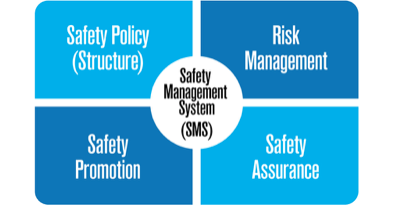November 1, 2019
Labor-management disputes at the airlines always raise the concern that safety may be affected. Usually, the concerns focus on the workplace tensions that arise when management and labor are involved in protracted disputes. Those workplace tensions can destroy the collaborative atmosphere important to aviation safety. They can also add stress to workers that can affect their ability to do their jobs properly.
Of course, protracted disputes can lead to even worse outcomes. One of the worst-case scenarios of such disputes recently played out in the news of an American Airlines mechanic who was arrested for allegedly sabotaging a Boeing 737-800 at Miami International Airport. According to an FBI affidavit, the mechanic tampered with the air data module system, a critical component of the aircraft’s navigation system, responsible for providing information—such as airspeed and altitude—for display in the cockpit. As the aircraft was taxiing for departure on July 17, the crew powered up the engines and noticed an error message for the system. An inspection of the aircraft found that a pitot tube had been blocked with foam.
In the FBI affidavit, the mechanic is quoted as saying that the contract dispute with American Airlines was hurting him financially and that he tampered with the aircraft “to cause a delay or have the flight canceled in anticipation of obtaining overtime work,” and “not to cause harm to the aircraft or its passengers.” Regardless of what the mechanic’s intent was or the reasons for his actions, tampering with an aircraft is the most outrageous thing any mechanic can do. As a mechanic for more than 50 years, I am sickened to think that anyone whose job it is to fix airplanes would intentionally use his knowledge and access to an airplane to do something that puts the airplane, and all those on board, at risk.
I have been thinking about the labor disputes at American Airlines, and Southwest Airlines, for some time, especially in relation to the safety management systems both airlines are now required to have. This act of sabotage and its connection to one of the labor disputes prompted me to finally write this article. As many of you are probably aware, both American Airlines and Southwest Airlines are involved in protracted disputes with their mechanics’ unions. Without speculating about the merits of the disputes themselves, it’s fair to say that that situations at both carriers have become acrimonious enough that both airlines have sued their mechanics’ union, alleging—among other things—illegal work slowdowns that grounded flights and disrupted schedules. The unions at both airlines have countersued.
AIRLINES’ RESPONSIBILITY
The FAA, in reaction to the rising tensions, sent a letter to the heads of each airline and its respective union (unions in the case of American). The letters are essentially identical and state that the FAA is aware of pending litigation between the airlines and their unions but is not a party to those lawsuits and remains neutral on the labor negotiations. The letters state: “The FAA cautions that a breakdown in the relationship between [American/Southwest] and the Union raises concerns about the ongoing effectiveness of the airline’s safety management system. Safety is a shared responsibility that demands a collaborative culture irrespective of any ongoing controversy between the organizations.”
The letter goes on to state: “In the midst of litigation, I write to emphasize the importance of ensuring cooperatively, in accordance with FAA standards, the highest level of safety in the airline’s operations.” The letter is signed by the FAA’s Associate Administrator for Aviation Safety, Ali Bahrami.
Here is the rub for me. Airlines and unions do not have the same obligation for ensuring safety, especially under a safety management system. In fact, the FAA’s regulations, Federal Aviation Regulation Part 5, 14 CFR Part 5, don’t mention unions at all. And that’s not because unions don’t play a critical role in the safety equation. I was an IAM union member for many years and active in the union’s safety work. I participated in many accident investigations as a union member and sat on many FAA/industry regulatory committees. I know first hand the important safety work that unions do.
But doing important safety work and having “shared responsibility” for safety at an airline are two very different things. In my opinion, addressing airline and union management as though they were equals—FAA did by addressing its letters jointly to the airline presidents and union officials—undercuts the airline’s ultimate responsibility and accountability for its operation of the airline. After all, it is the airline that holds the FAA’s operating certificate and it is the airline alone that is responsible for the functioning of its safety management system.
If there’s one thing that SMS has made clear, it’s that responsibility and accountability have to be clearly defined and reside at the highest levels of the airline. The airline has to identify an “accountable executive” with the authority over operations, financial resources, human resources, and for ultimate safety performance. The regulations further specifically provide that the airline “must define accountability for safety” and “must identify the levels of management with the authority to make decisions regarding safety risk acceptance.”
While one letter from the FAA may not seem that significant, in my opinion it indicates the FAA’s historic hands-off approach to what it considers labor problems even when allegations of safety issues are made. My concern with how the FAA handles union worker safety complaints in the midst of labor-management disputes goes back to the days of Eastern Airlines. FAA inspectors investigating airline mechanic complaints grew so frustrated with FAA management’s unwillingness to act that they took their complaints to the United States Attorney in Brooklyn, who ultimately filed a criminal case against Eastern Airlines for, among other things, falsification of maintenance records.
So while I have no idea whether the allegations made by mechanics in these recent cases are valid or not, the FAA should not hesitate to place responsibility for safety in the hands of the airlines—where it properly belongs.
*Reprinted with permission from “Airline Union-management Relations in the Age of SMS” by John Goglia, November 1, 2019, AINonline.com ©2019 AINonline.com



